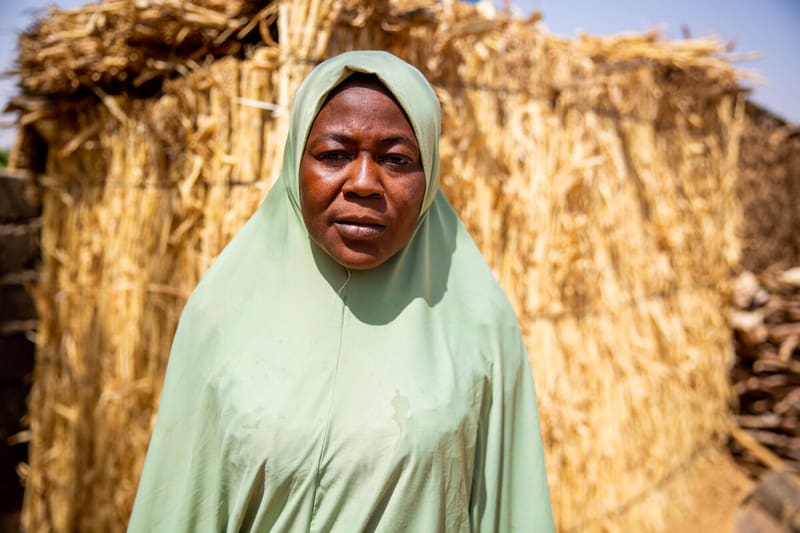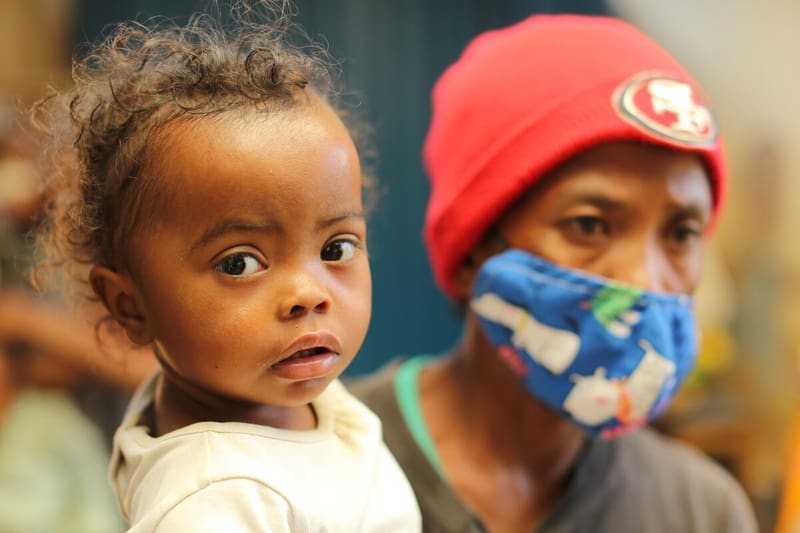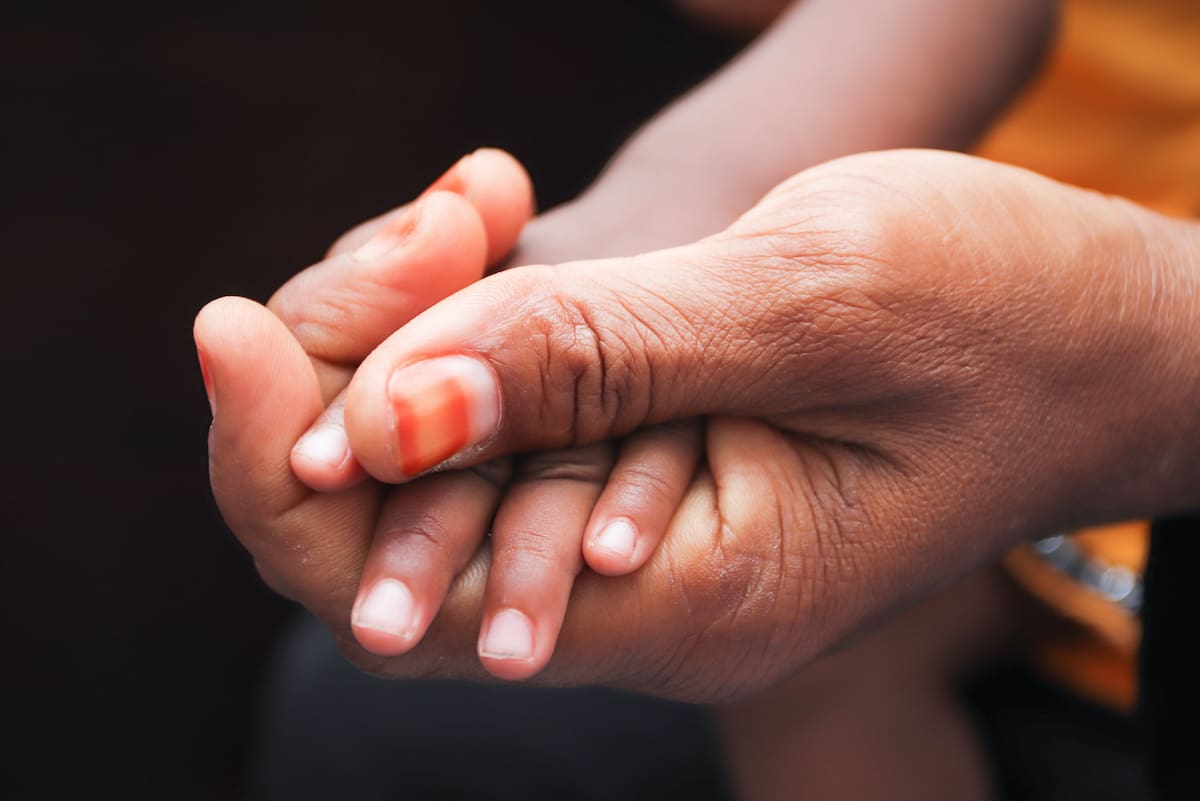A New COVID-19 Mantra? ‘Nobody Is Safe Until Everybody Is Fed’

A common refrain in recent months around COVID-19 has been that “nobody is safe until everybody is safe,” referring to the importance of developing an effective vaccine and distributing it equitably.
But across the developing world there’s something else we need to understand: Vaccine efficacy may depend, in part, on a person’s nutritional status, a condition that, in a terrible irony, is worsening for many vulnerable people because of COVID-19. Now more than ever, with four countries on the edge of famine, it is important to explore the links between hunger, the virus and vaccines.
How COVID-19 Fuels Hunger and Virus Vulnerability
- COVID-19 triggered a global food security crisis, pushing several countries to the brink of famine and nearly doubling the number of hungry people worldwide to 272 million.
- For the millions who live hand to mouth, rampant unemployment and loss of income made it nearly impossible to feed themselves and their families.
- In a vicious cycle, illness makes people vulnerable to malnourishment, and malnourishment leaves people vulnerable to further infection.
- Current research suggests that vaccine efficacy may be lower for those who are malnourished. With 34 million people on the brink of famine, this possibility lends to the urgent need to ramp up food assistance to the world’s hunger hotspots.

Today, four countries stand on the brink of famine. In northeastern Nigeria, the outlook is the worst in four years. To prevent famine, the United Nations World Food Programme (WFP) is offering nutrition support programs to families like Aisha’s (pictured) and is scaling up to reach 1.7 million people in the region with food assistance this year.
COVID-19 Triggered a Food Security Crisis
The COVID-19 pandemic quickly triggered a global food security crisis due in large part to losses in income. Some 250 million jobs, many in the informal economy, were lost last year. Under the pressure of COVID-19 lockdowns and this rising unemployment, governments were left with fewer resources to support the most vulnerable people And threat of famine grew.
All this matters because millions of people around the world live hand to mouth, and any disruption in income directly impacts their ability to feed themselves and their families. Research has shown that, in the face of economic stress, people opt for cheaper processed foods over highly nutritious foods.
On top of the economic fallout, low-income countries lack the healthcare infrastructure to respond to the virus or carry out widespread testing. At the same time, only 20 percent of the poorest people in low-income countries have access to social safety nets of any kind (like food stamps and Medicare in the U.S.), and when they do exist governments often lack the resources to scale them up.

37-year-old Sahondra lives in Madagascar’s capital Antananarivo, an area where most people live on less than one dollar per day. When COVID-19 hit, travel restrictions prevented her husband from working and they could only afford cans of rice each day. Their youngest daughter Nambinintsoa (pictured) receives nutrition support from the U.N. World Food Programme.
The Vicious Cycle of Hunger and Infectious Disease
It is widely known that malnourishment places people at higher risk of infection. Improper nutrition causes a breakdown in the body’s first lines of defense against disease. Malnutrition has already been recognized by researchers as a key factor in death rates of elderly COVID-19 patients and is the leading cause of death among children under five years of age.
Lack of nutrition in the first 1,000 days of a person’s life, from pregnancy to their second birthday, can have lifelong impacts on health and prosperity. Physical growth—height, weight, and brain development—can be permanently damaged, leading to learning impairments and poor health. In fact, malnourished children are more than nine times more likely to die from infectious diseases than healthy children are.
Paradoxically, COVID-19 has caused a dramatic decline in the number of children receiving lifesaving routine vaccinations. According to the World Health Organization and UNICEF, in 2020 at least 30 large-scale measles vaccination plans were postponed or cancelled due to COVID-19. Researchers at Johns Hopkins have shown that an additional 6,000 children could die each day from an otherwise preventable disease because of the pandemic.

Maryam holds the hand of her little girl. Malnutrition rates are surging among young children in Yemen as the hunger situation worsens.
In a vicious cycle, illness makes people vulnerable to malnourishment, and malnourishment leaves people vulnerable to further infection. How? Infections commonly affect the microorganisms that live in our gut, producing system-wide inflammation and limiting the body’s absorption of nutrients. For example, diarrhea leaves children’s bodies weak and steals their ability to extract nutrients from food, killing more than 2,000 children each day.
A Chance of Lower Efficacy: Malnourishment and the COVID-19 Vaccine
“Vaccinations and nutrition interventions complement each other, and each amplifies the impact of the other. They should, where appropriate, be delivered together, as a core part of a comprehensive primary health care approach, on the road towards universal health coverage,” states one nutrition advocacy coalition.
While the literature generally suggests that most malnourished people are still able to develop some protective immune response following vaccination, the timing, quality and duration of responses may be impaired by their underlying nutritional status. The possibility of a vaccine causing undue harm is also higher for people with compromised immune systems, pregnant and nursing mothers, and those suffering from other moderator or severe illnesses —all of which are common among malnourished populations.
The Mission of the Century: Deliver Lifesaving Food Before It’s Too Late
Saving lives and stopping the spread of the coronavirus depends on the COVID-19 vaccine working on the largest number of people as quickly as possible. The vaccine trials to date have tested for the prevention of symptom development, not for complete immunity. This means that COVID-19 vaccines need to reach billions of individuals to achieve herd immunity and protect non-vaccinated populations.
The “mission of the century” may not only be arranging airlift capacity for vaccine distribution, as some have suggested. Instead, it may also be reaching hundreds of millions of people with lifesaving food beforehand, so their bodies are prepared to defend themselves from this virus and others.
We may, in other words, require a new mantra: “Nobody is safe until everybody is fed.”
The U.N. World Food Programme is the world’s largest hunger-fighting agency and is uniquely qualified to tackle these challenges. But we cannot do it without the support of the American people. We hope you’ll join our cause and donate here to help us continue our lifesaving work.
Chase Sova is senior director of public policy and thought leadership at World Food Program USA. He is also a non-resident senior associate with the Global Food Security Program at the Center for Strategic and International Studies (CSIS) in Washington, D.C. An earlier version of this article originally appeared on the CSIS Commentary site.




